Original Publication Date: 11/26/2010
Botanists and ecologists familiar with the Klamath Mountains are inevitably familiar with the similarities the area has with the southern Appalachian Mountains. It is understood that both regions harbor exceptional plant diversity due to the complex interaction of several factors. They are each ancient mountain ranges that have sustained a similar flora since at least the Cenozoic. These mountainous regions have served as monadnocks–ultimately refuges for plants as populations of species have been eliminated by glaciation and climatic dessication1. Arriving in Virginia in a warm, dry November spell the Blue Ridge Mountains were beckoning me to visit as I peered toward them from the Shenandoah Valley.
I decided to research a mountain top hike that would provide both views and of course–if possible–relict conifers. After finding a publication from 1966 about the conifers of Shenandoah National Park2 mom, dad, and I settled on Stony Man Mountain–the second highest peak in the park at 4010 feet. The Appalachians have an ancient history, being one of the oldest mountain ranges in the world. Stony Man’s summit is composed of greenstones–which were formed 800 million years ago (Ma) by lava flow. With time the rocks changed and were ultimately uplifted 200 Ma and have eroded back to their current height over millenia. The botanical interests–while dependant on the mountain for safe harbor–are a more recent circumstance.
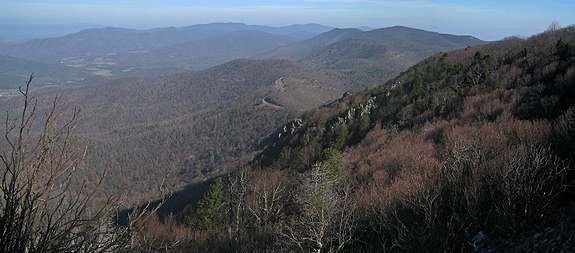
In addition to the wide array of flowering trees, shrubs and annuals that can be found in the Appalachians, several relict conifers survive on this particular mountain top and sporadically elsewhere across the rolling landscape. The conifers are harbingers for the microsites fostered by complex climate and geology which ultimately mimic conditions of a colder time. Canada yew (Taxus canadensis), red spruce (Picea rubens), and balsam fir (Abies balsamea) are found at their southern range extensions in and around the southern Appalachians of Virginia. These trees thrived in the colder climate of the Pleistocene but are now restricted to the highest mountain tops and coolest glades.
Canada Yew | Taxus canadensis
The Canada yew is an understory tree of late successional forests. This is exactly the habitat in which we found it in Shenandoah National Park. This yew of the northeast is ecologically identical to the Pacific yew (Taxus brevifolia) of the Pacific northwest. The small isolated population we found on the summit of Stony Man reminded me of select mountain tops of the Klamath–like Preston Peak. The population here was matted to the earth and often growing beneath and around shrubs on rocky outcrops punished by the elements.
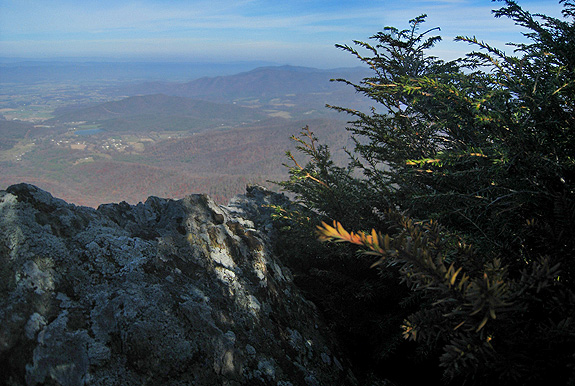
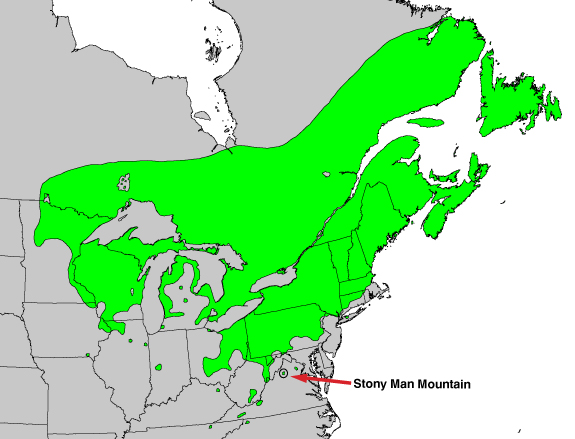
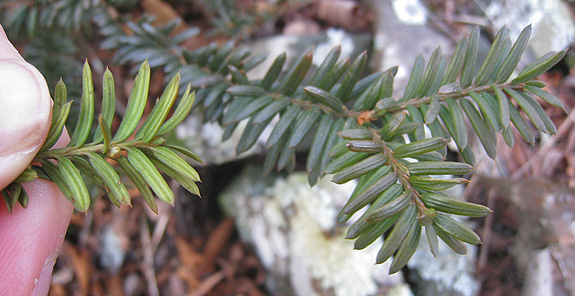
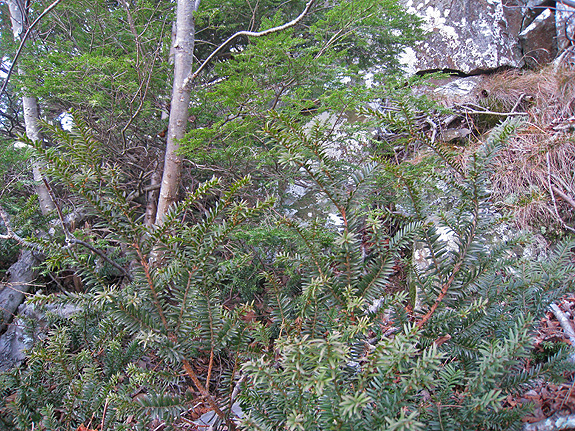
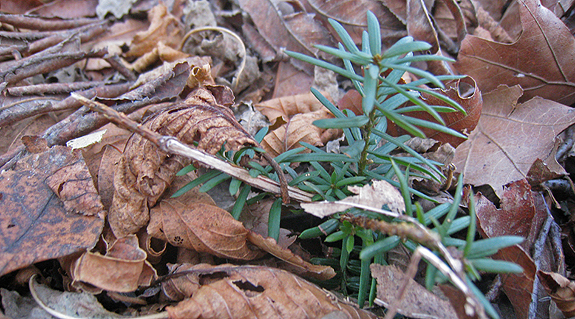
Needless to say, this was an exciting plant to find and learn about...as were those that follow but are discussed in less detail.
A few other conifer highlights included…
Balsam fir | Abies balsamea
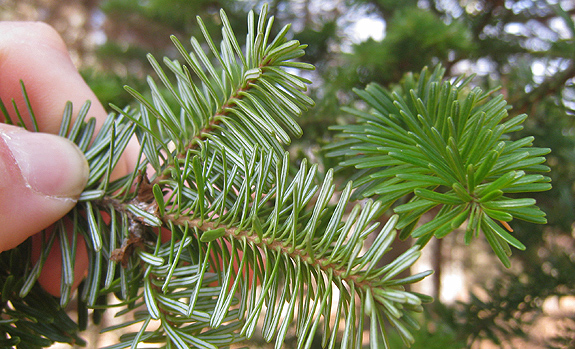
- Conifers.org balsam fir
- Wikipedia balsam fir
- Conifers.org Frasier fir
- Evolutionary history of the two species
red spruce | Picea rubens
pitch pine | Pinus rigida
Other Resources:
Citations:
- Whittaker, R. H. 1960. Vegetation of the Siskiyou Mountains, Oregon and California. Ecological Monographs. V30:3:279-338.
- Mazzeo, Peter M. 1966. Notes on the Conifers of the Shenandoah National Park. Castanea 31:3: 240-247.
- Hils, Matthew H. 1993. Taxaceae. Flora of North America Editorial Committee (eds.): Flora of North America North of Mexico, Vol. 2. Oxford University Press.
- Potter, K.M. et al. 2010. Evolutionary history of two endemic Appalachian conifers revealed using microsattilite markers. Conversation genetics. 11:1499-1513.
- Farjon, Aljos. 1990. Pinaceae: drawings and descriptions of the genera Abies, Cedrus, Pseudolarix, Keteleeria, Nothotsuga, Tsuga, Cathaya, Pseudotsuga, Larix and Picea. Königstein: Koeltz Scientific Books
COMMENT:
AUTHOR: David Fix
DATE: 11/24/2010 2:17:02 PM
Thank you, Michael, for the quick look-see. Jude and I were in the park, as well as over in the Alleghenies in May and also enjoyed Red Spruce. It was fun to see you apply your landscape-parsing and plant skills to a different place. Question. What is that abundant and delicate knee-high fern with the pinnae that barely clasp your fingers as you feel it? But I simply enjoyed it in many spots and don’t need the name…
—–
COMMENT:
AUTHOR: Allison
DATE: 11/24/2010 2:43:10 PM
Great trip, beautiful! This also taught me that monadnock is not just a mountain in southern New Hampshire, but rather my favorite mountain is the name sake for the topographical phenomenon.

